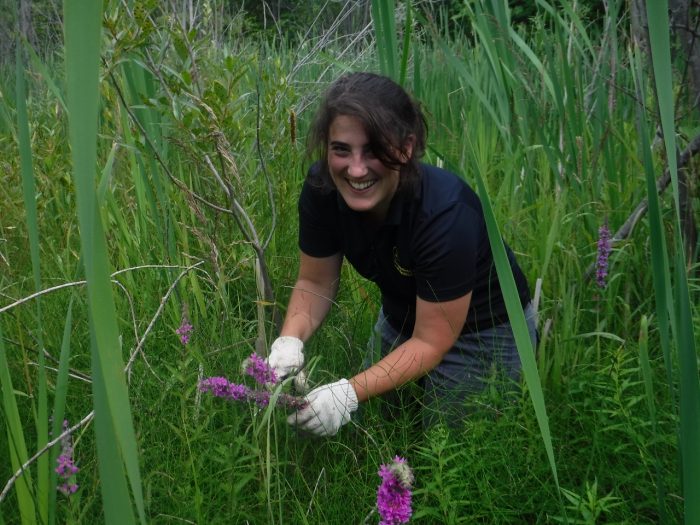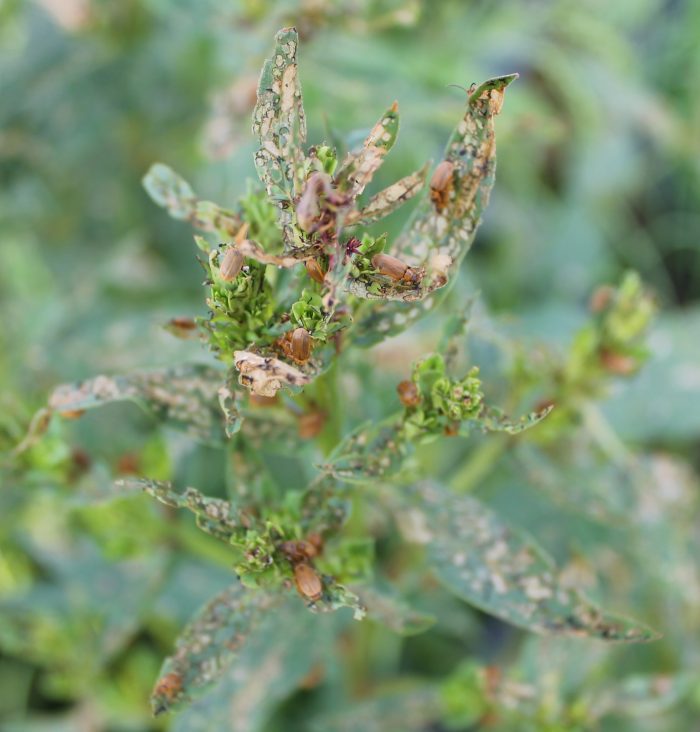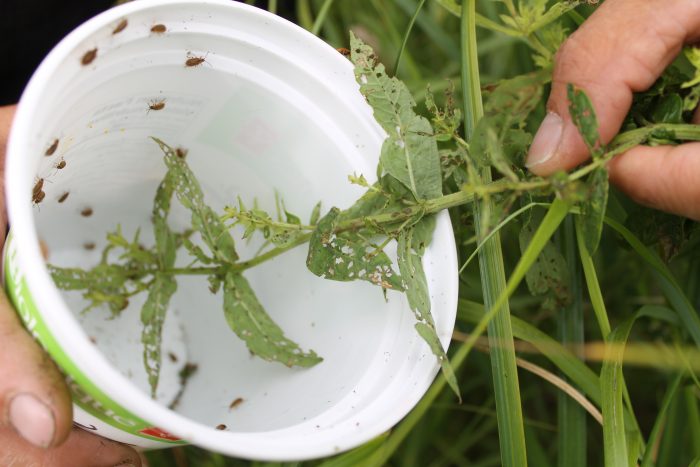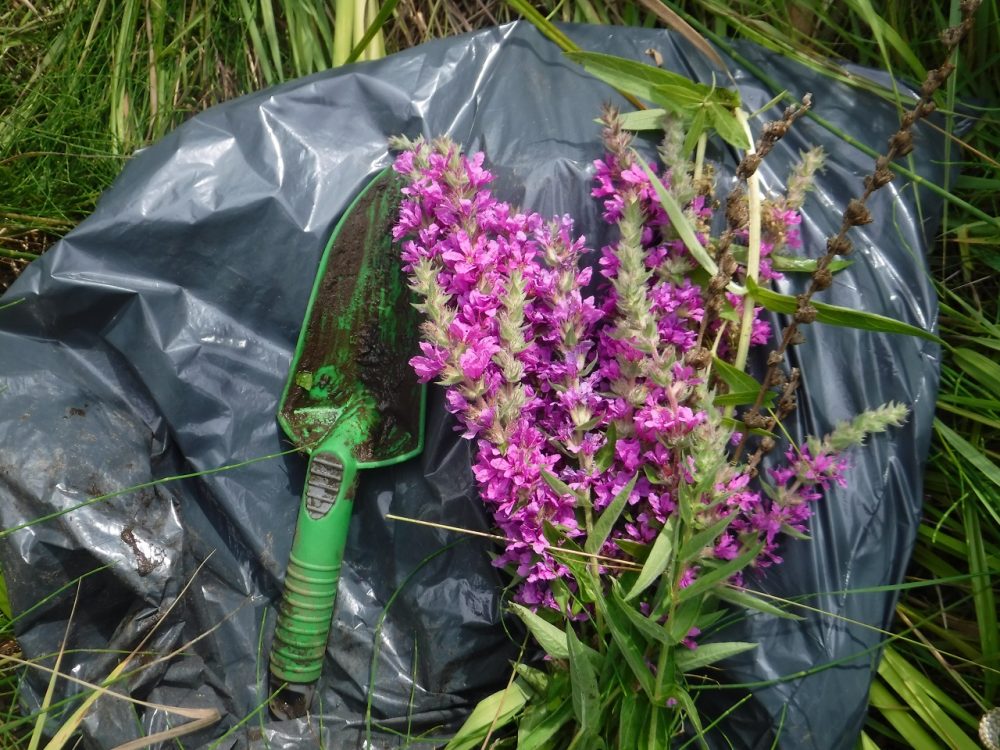When DUC conservation specialist Emma Bocking learned of purple loosestrife (Lythrum salicaria) growing in Corner Brook Marsh, she knew there was no time to lose. It was the first reported sighting of the notorious invasive plant at the Newfoundland wetland. She hoped it would be the last.
“Once an invasive species like purple loosestrife gets established in an ecosystem, it’s very difficult to remove,” says Bocking. “That’s why we made it a priority to remove as many plants as possible right away, before the population had a chance to really take hold in the marsh.”

DUC staff and volunteers canoed between islands in the marsh, pulling up plants as they went. They used trowels to make sure they removed all of the roots. Since completing the dig, they’ve monitored the area regularly to watch for any sign of its return.
It’s not that they didn’t like the look of the bright fronds swaying in the breeze between cattails. But purple loosestrife takes over wetland ecosystems, chokes out native plants and leaves less food for waterfowl and other wildlife to eat.
The perennial plant arrived in eastern North America in the early 1800s. Settlers brought the beautiful plants for their gardens, and seeds were present in soil used to provide weight for stability on European ships. Since it was introduced, it has spread westward and is now found across much of Canada and the United States.

The team at Corner Brook Marsh was successful in removing purple loosestrife. They were fortunate that local DUC volunteer Jason Foster spotted it early. Too often, affected areas are not treated until the plant has spread much further—creating a sea of purple flowers too numerous to dig up.
Calling in bugs for back-up
When a plant from one continent is introduced to another, it usually comes without its natural enemies—other species that keep its population under control in its native habitat.
“The reason why purple loosestrife is so invasive here is because it doesn’t have its natural predators, like a beetle from Europe,” says Jade Raizenne, conservation and program specialist with DUC’s Native Plant Solutions (NPS).
“Researchers determined it was safe to introduce the beetles to Canada as a biological control. The beetle only eats the purple loosestrife plant— it doesn’t have any other host—so it doesn’t affect native species.”

Starting in 2015, beetles were put to the test Manitoba’s Rural Municipality of Brokenhead. In partnership with the Centre of Indigenous Environmental Resources (CIER), NPS and members of the Brokenhead Ojibway Nation (BON) released approximately 450 purple loosestrife beetles at five wetland sites.
They focused on an area around the Brokenhead Wetland Ecological Reserve, known for rare plant species and species of cultural importance to the community.
“Ultimately what we wanted to do was leave the community with the capacity to take this on in future years,” says Jessie DeGrave, CIER project manager/research associate and project manager for the Brokenhead project.

DeGrave says demonstrations on beetle release were followed by the release of the beetles by BON community members. NPS staff later provided instructions on how to collect and rear purple loosestrife beetles for future distribution efforts.
In the year following the release, beetle presence and their damage to the plants was evident where the releases had taken place.
Similar tactics have been used elsewhere in Canada with success. A release at wetlands in Ontario in the 1990s has shown purple loosestrife reductions as high as 90 per cent. Native marsh vegetation has naturally re-established in its place—proving that with the right tools available, wetland habitats can be reclaimed from aggressive invaders like purple loosestrife.




